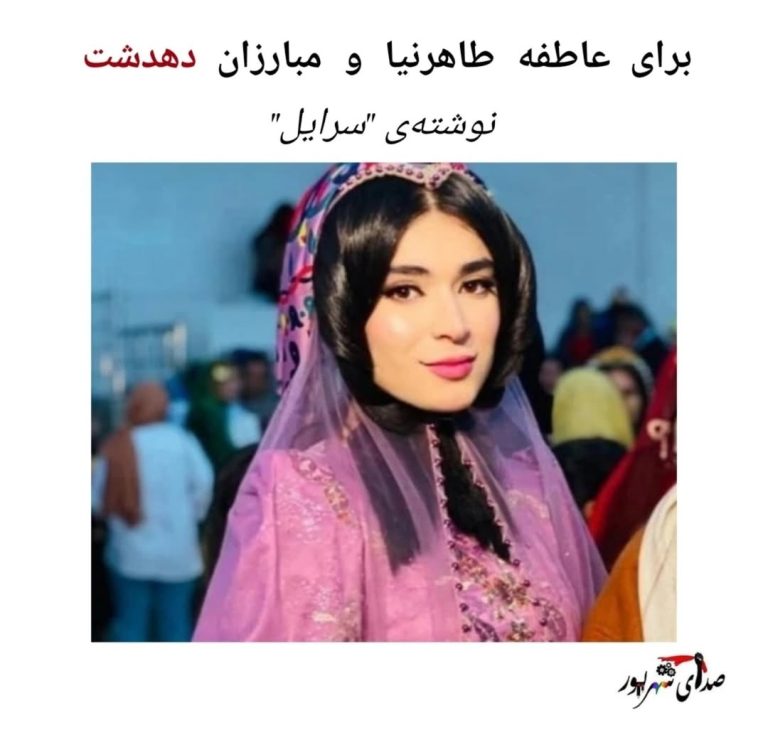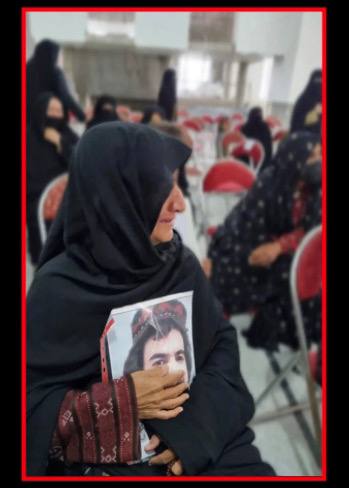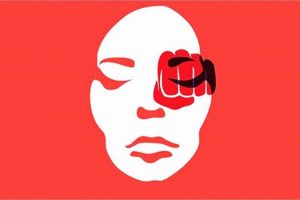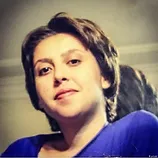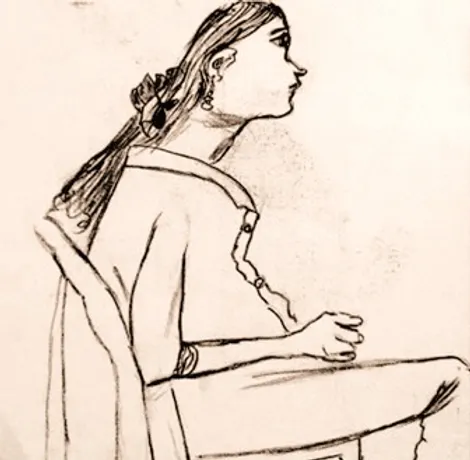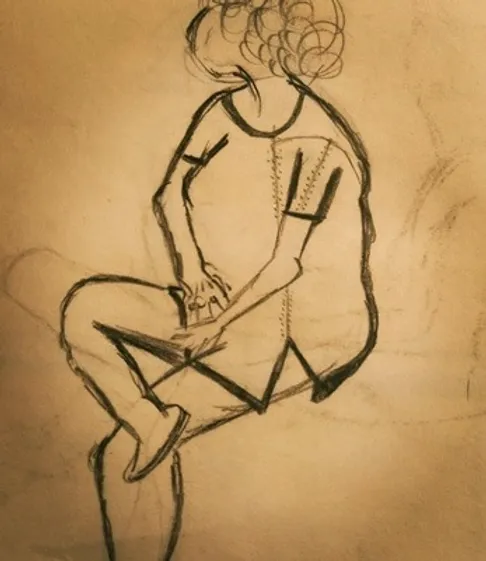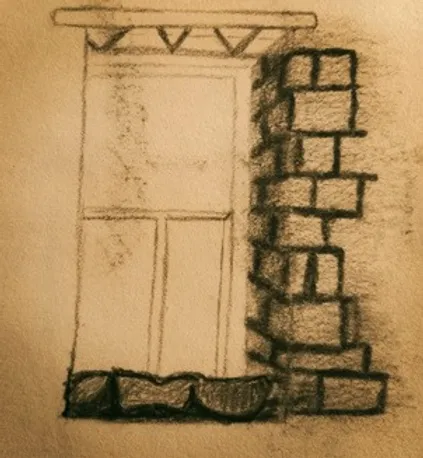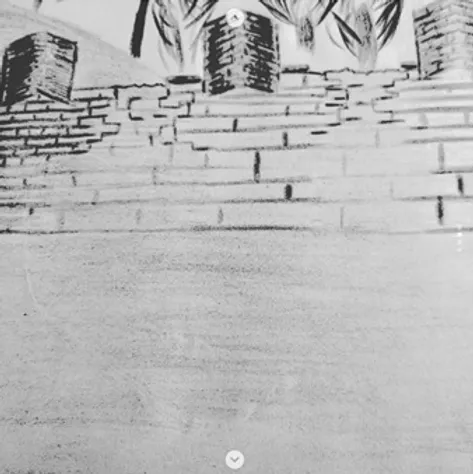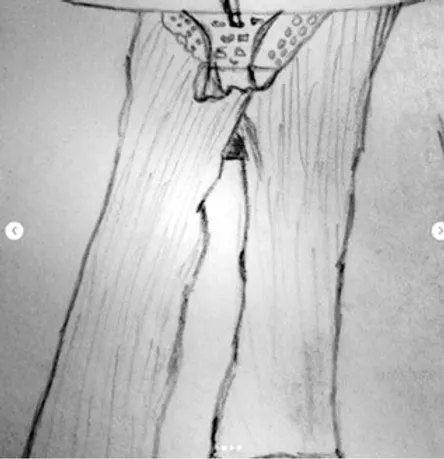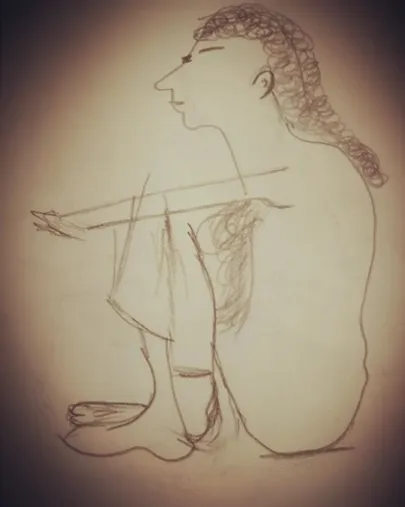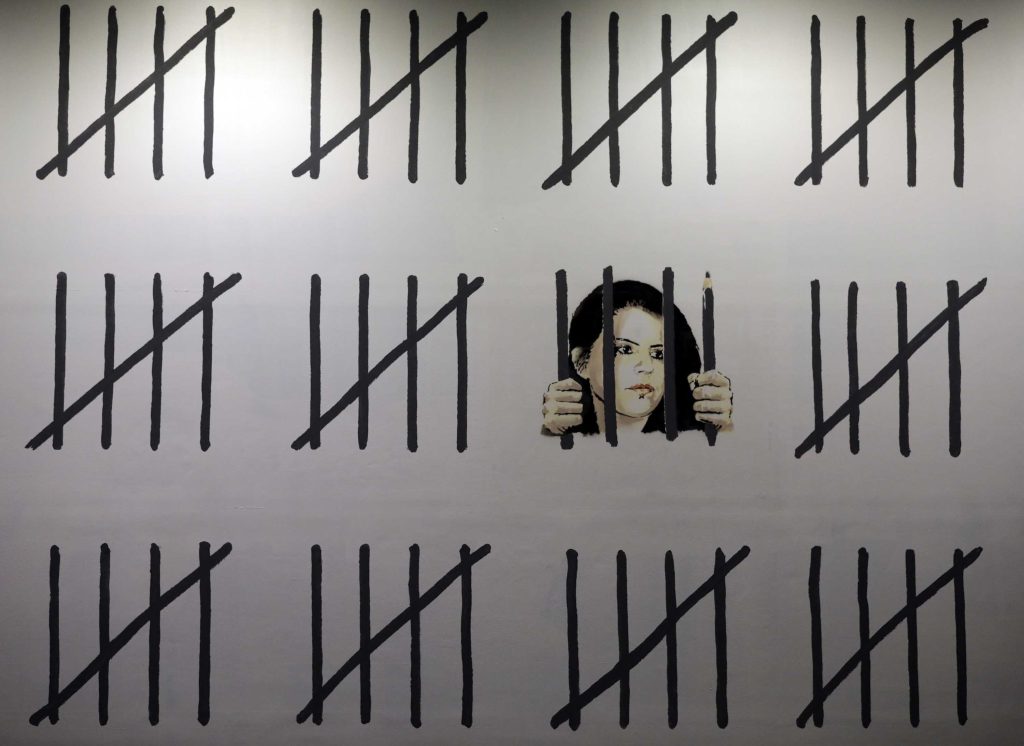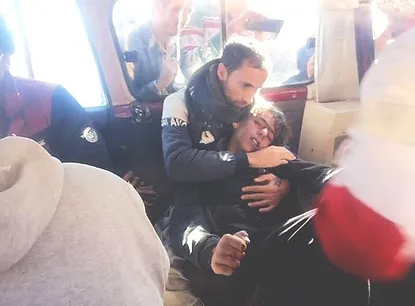|Four: Compulsory hijab; Purification of society or humiliation of women?|
Court guards have sharp eyes; like a super professional device, they see everything in a fraction of a second. There is not a total of three steps between pulling back the curtain of the first door and reaching the second. In the bustling courts, one wonders who is watching me. Here the voice of the guards answers the question. Either they say pull your scarf forward, or fasten the buttons of your manteau, or why don’t you cover your ankles and other reactions like these! The trial may start at any time. You have not slept the night because of the anxiety of this day and now you have to answer such meaningless questions! Most of the time they leave you alone if you just say ok, sir. But we have seen times when they do not allow you to pass the door until you cover your body in a way they desire.
These few lines are just a small part of the daily humiliation of women in one of the official offices of this country, no matter it is early in the morning, or it is evening time, their honorable occupation is full-time, no matter you are in Vanak Square or Enghelab Street, or University Education Office or a language class, no matter you are a lawyer or a student, old or young, married or single, walking alone or with family members, no matter you have the most tired and colorless face possible or too much makeup on your face!
They always find a reason to ruin your moments and do not need any criteria to disturb your body and mind.
The issue of hijab has two dimensions, or I better say two levels. At the first level, it is said that the compulsory hijab is basically one of the manifestations of human rights violations. In the modern world after many years of attempts of legal systems to reach a point where individual freedoms and human rights are obvious and agreed upon by the international community, the choice between wearing or not wearing and in the next stage choosing the type of wearing is one of the basic and fundamental rights of individuals. Thus, the basis of such a law is discriminatory, contrary to human rights, and invalid and illegitimate from the perspective of women’s rights activists.
But simplistically, at the next level, if we do not consider the basis of this unjust law and consider “not wearing hijab” as a simple crime in the Iranian legal system, the situation will not be better. According to the legal community and many officials, what is going on in society and what women face is utterly contrary to existing laws. Note to Article 638 of the Islamic Penal Code criminalizes presence in public places without a canonical hijab. The punishment for this crime is ten days to two months in prison or being flogged up to 74 times.
First, the hijab is not skeptical or spectral in jurisprudential texts; In simpler terms, it is either a hijab or not. What is considered a crime in the article is the presence of a hijab. Therefore, according to this article, punishing what they call bad hijab has no legal validity. On the other hand, the punishment for this crime is under the criminal law of the 8th-degree punishment, and under the law of criminal procedure, the investigation of the 7th and 8th-degree crimes is done in the courts. Simply put, the issuance of criminal verdicts by the Ershad (Guidance) Court, known as the Vozara Court on Ghaem Magham Street in Tehran, has no legal validity at all. In fact, if judicial officers arrest a woman for not wearing a headscarf in public, the Ershad Court should immediately send the case to a competent criminal court by issuing an incompetence order, rather than investigating and issuing a criminal order.
Also, how women are arrested by the Guidance Patrols (Gashte Ershad) is basically against the law. For years, the world has concluded that no one can be arrested without a court order and process of law. The harsh, illegal, and inhuman acts of Ershad officers towards women are incompatible with any human rights logic and illegal and contrary to the fundamental rights of individuals, by the laws enacted and enforced by the Iranian legal system. Article 32 of the Constitution of the Islamic Republic explicitly confirms this.
In addition to physical abuse and public defamation of women, other reactions are also rejected from the perspective of criminal law. For example, sending text messages about not wearing a hijab in a car, no matter what reason or logic behind it, has no legal justification in the Iranian legal system. In short, we should say that, first of all, inside the car, it is not a public space and it is a kind of private place. Therefore, it is basically impossible that the crime of not wearing a hijab occurs in a car, according to the article we mentioned. Assuming that this crime can occur in a personal vehicle, proving the occurrence of the crime requires evidence. We have recently seen that text messages were sent randomly and not based on the recordings of the cameras, and the plaintiffs had no evidence to prove the occurrence of the crime. On the other hand, the moral security police do not have the authority to cite the accused. According to the explicit text of the law, only the prosecutor or the court can cite the accused. This act is also in clear opposition to the principle of Individual Criminal Responsibility, a principle accepted in all legal systems of the world. This means that a text message is sent to the owner of the car, while in many cases the owners themselves did not commit the so-called crime. In addition, sending a second text message for the confiscation of the car is strange, surprising, and contrary to criminal procedure principles. How is it possible that an institution that has no jurisdiction to inquire into this crime, cite a person other than the accused person without any specific evidence and impose a punishment such as confiscating the car after ten days without holding any trial and not during legal procedures?
Accordingly, we can say that the hijab is more of a security issue than a religious issue, and the desperate efforts of all these years to impose the hijab on women have been for sabre-rattling and showing political and ideological power. In fact, those in charge of deepening the culture of hijab seek to humiliate women in general and continue to oppress them. According to them, the hijab is the first fortress that, if it fails, will inevitably lead to other problems. Therefore most of the time we are confronted with really different acts and the severity of them changes periodically. In fact, the essence of what we are facing is completely violent and against women, and because of the invalidity of the principle of the legality of crime and punishment and the prevalence of extra-legal institutions, incompetent authorities, and unjustified instructions show themselves more than ever.
|Five: I am the only owner of my body! |
This sentence is very common in the world of Iranian law, both among professors and academics and among judges and lawyers;
“A woman’s body is inherently stimulating.”
When I hear this sentence, I always think of the moments when my body is in the unsexiest state possible. I mean, at least in those moments I’m personally determined to experience living in this world regardless of gender or sexual stimulants. For example, the times when I walk in the streets while I’m telling stories in my head and I don’t want to pay attention to anything and anyone in this world except what is going on inside me or, for example, when I feel a desire to ride a bike, I don’t want the world to pay even the slightest attention to my body, and I sincerely want the whole world to ignore me and leave me alone. Or when I start my so-called preaching and talk about everything with my audience and tell them about my wishes, what I have learned, and what I know, I indeed expect my words to be seen and chewed instead of my body. This is when I think to myself, what role does this repetitive sentence play and where does it come from?
The answer is clear; The origin of such a sentence and idea is the ever-burning patriarchy. Patriarchal thoughts want to continue oppressing women by confining women in the prison of sex and erotic experiences.
Look! It uses the term “inherently”. By saying this, it relieves itself and us that the will of a woman does not matter, she does not have control over it, and this body, whether she wants it or not, will stimulate us. What’s the solution? to make her cover her body as we say, make her speak as we say, and behave so that this stimulation reaches the lowest level, and she is safe from our bites and injuries.
Ownership of the body means having the power and will to decide for the body without fear of violence or away from other domination, which is an inalienable right of all human beings. Laws and customs such as genital mutilation, lack of access and the right to use contraceptive methods, virginity testing, not having the right to abortion, and compulsory hijab all directly question the right to the body. According to the United Nations Population Fund (UNFPA), half of the world’s women do not have the power to decide on their bodies! For example, in 20 countries, women are forced to marry their rapists, and in 43 countries, marital rape is not criminalized.
Our body has countless other functions besides sex, regardless of its structure and sexual orientation. Sex is just one of the capabilities of this body. Every person has complete and absolute ownership of his/her body. The use of the sexual aspect of the body is solely at the disposal of the owner of that body. Reducing and restricting the female body to the world of sex and sexual pleasures, in a way, signifies the female body slavery. In this process, like a free street show, women’s bodies are constantly judged, admired, or blamed by others. It is as if a woman unwittingly carries her body and invites others to this imposed theatre.
In this process, the beauty industry encourages and even obligates the pursuit of fixed patterns of beauty. Therefore, women are caught in a forced competition to become sexier. The dominance of the body as a violation of the autonomy of individuals, like other forms of violence, also affects men and LGBTQI+ people. The dictated criteria of beauty and the concentration of thoughts on the sexual and sexy dimension of the human body involve everyone in an erosive process, and in this process, everyone is a victim.
A woman’s body seems to be criminal and evil no matter what she wants or does. The physical experience of women in the world is strongly denied or blamed. For example, we can mention the shame of puberty and menstruation in women, the bulges of our breasts and the blood that naturally comes out of our bodies every month should always be kept private. Many girls deliberately hunch in puberty so that no one can see the bulges.
Or who can say that the experience of buying menstrual pads was not accompanied by embarrassment and facial flushing for her and that she did not end up carrying them as a forbidden cargo in a black bag on the way home? Or we all have probably heard that the presence of menstruating women in mosques and holy places is rejected and forbidden! Or many women must ask for permission from their husbands to take birth control pills and find it difficult to imagine forcing them to use condoms without seeing a violent response. All of this shows how far human societies, especially traditional and religious systems such as Iran, are from respecting the ownership of the body as a fundamental right of a citizen.
Possessing a woman’s body and focusing on the sexual and sexy dimension of her body is nothing but a violation of her rights and the continuation of slavery and submission of her thoughts. Let’s respect people’s ownership of their bodies and not collaborate with the domination system by submitting to patriarchal and heteronormative beliefs!
|Six: Women Against Femininity|
I dare say that one of the bitterest narratives of violence against women, which recently made headlines in the media, was the horrific story that Sepideh Gholiyan told from the women’s ward of Bushehr Prison. These stories are just one aspect of the tragedy that is happening in women’s prisons. According to Sepideh Gholiyan, a prison is a place near the end of the world for women. Violence in prisons is egregious, and every voice and protest is suffocated with more violence. In my brother’s words, who is a prison soldier, it is as if “there is no God in prison!”
But why? Why do accused, convicted, and imprisoned women experience more violence than men?
Femininity has long been associated with attributes such as innocence, gentleness, softness, and being oppressed. In fact, a good woman is a woman who does not commit a sin or crime, does not do violent and hard tasks, and always is submissive in front of an oppressor. Dividing traits and behavioural patterns based on gender is the same stereotyping process.
Among these, sex, addiction, and crime stereotypes are very important and significant. Simply put, these clichés see the realm of sex, addiction, and crime as masculine realms. In other words, sex and free sex, addiction to drugs and alcohol, or committing all kinds of crimes by men are accepted. Acceptance here does not mean that these acts are unpunished. In fact, such men do not face a value judgment in this society. It means that these behaviours do not question the masculinity of these men. However, as soon as women enter these realms, their feminine dignity and prestige are damaged. Women who seek multiple sexual relationships, women who use drugs, and women who commit crimes are worthless women who are not only deserving of punishment but also deserving of blame and deserving of exclusion from human society.
Feminist criminologists believe that delinquent women suffer twice as much social pressure as delinquent men because women have not only violated social laws by committing a crime but have fundamentally disregarded the rules of nature, rules based on the innocence of women. In fact, guilty women are not just people who have committed a crime and should be punished! In addition to being criminal citizens, these women are corrupt mothers, rebellious wives, and disobedient daughters. Therefore, it is appropriate to exclude them from all human groups, and what Sepideh Gholiyan clearly said about the prisoners’ relationship with their families confirms this.
We women are subjected to all kinds of violence just because we are women! Imagine how much we would be victims of violence if we went a little out of this narrow framework of masculine values and became addicted or committed a crime!
Addiction is not a crime; having multiple sexual relationships is a consequence of the right to own your body, and committing a crime has a heavy price called criminal punishment in law. Therefore, none of these three groups deserves double oppression. These people have human rights and dignity, and the violation of these rights is the same as violence. Addicts and criminals, both men and women, have human rights. The cycle of violence will not stop as long as we are not sensitive to violence against human beings and the violation of their human dignity and recognize them as worthy of violence simply because of their actions!
Let’s read what Sepideh has narrated and imagine only one moment of what is happening to the prisoners. No human being deserves these acts and this amount of violence.
|Seven: Together with LGBTQI+ people |
When Ali Fazeli Monfared’s brothers slaughtered him, I remember how sickly I started reading the comments below the news and was shocked by the amount of violence in the words and beliefs of the people. Many people said that if their brother or child were like Ali, they would use more violence. A 20-year-old boy is brutally murdered by his family, and the audience of this news, instead of expressing hatred for the killers and the reason for the murder, thinks that the victim deserves worse than death.
Ali’s assassination was described as an honour killing in many media outlets, raising concerns among human rights activists as well as the LGBTQI+ community. We may ask ourselves what is the difference between Romina’s murder and Ali’s murder? How did they both become known as honour killings? Was not honour equal to the women of a family and a society?
The answer is that there is no difference between the two murders; Both are rooted in the controlling patriarchal system. Masculinity has a deep connection with the truth of heteronormativity in the world. Such a belief sees the identity, sexual orientation, and relationships of human beings as confined to a fixed model. As usual, it equates this belief with human nature and the only truth of history. As a result, it considers any person who is or goes beyond this natural framework to be curable, otherwise, the person deserves death and non-existence. Since honour is the honour of a patriarchal system, anyone who can dishonour it even a little bit is doomed to decay. Thus, a homosexual man or woman is simply killed as easily as possible just because he or she is different from the dominant system.
At this point, however, what can stand to some extent against such heinous beliefs is the law and the legal system. According to human rights documents, all people, regardless of their sexual orientation or gender identity, have obvious rights, including the right to life and survival. As a consequence of international law, governments must enact and pass laws that not only do not violate human rights but also go beyond and punish those who violate human rights. In Iran, however, their laws not only lead to violence but also are basically one of the strongest roots of attacks on LGBTQI+ people.
Article 237 of the Islamic Penal Code explicitly criminalizes homosexuality and its punishment is flogging. This punishment also applies to behaviors such as touching and kissing. But in the case of sexual intercourse between two men, the person who did the intercourse will be flogged 100 times and the other will be executed, and in the case of sexual intercourse between two women, both will be flogged 100 times.
It is traditional and far-fetched to divide the sexual identity of human beings into men and women. People have different sexual orientations as well as different gender identities. Contrary to popular belief, these issues are not necessarily coerced; This means that some people, for whatever reason, completely freely and independently of hormonal restrictions, decide to choose their gender identity. The intention of this group of people may be fighting against common stereotypes or any other motive. What is important is recognizing the rights of individuals and respecting differences. This is what is expected in the first place from the laws of a civilized country and in the next step from the citizens of that country.
If we open our arms a little to accept different people, we will experience a more beautiful and safer world, both ourselves and others. Until the day when our law welcomes the obvious rights of individuals, we, as libertarians and egalitarians, will overthrow the extensive dictatorships in our homes!
